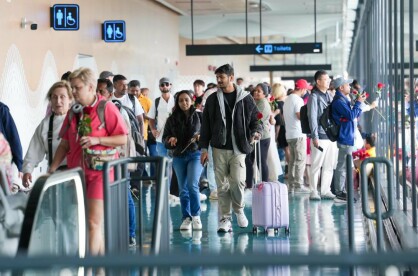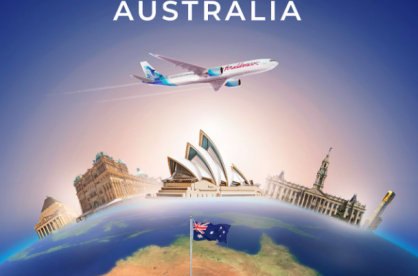Maldives tourism outlook for 2021
Total estimated tourist arrivals for 2021 is 1,053,000.

Maldives Airports Company Limited
Total estimated tourist arrivals for 2021 is 1,053,000.

Maldives Airports Company Limited
The Maldives concluded 2019 with 1.7 million tourist arrivals, a record for the country. Based on this, the Ministry of Tourism and industry stakeholders had been fairly optimistic for 2020, with the target of achieving beyond the record set in 2019. However, all these plans were laid astray with the COVID-19 pandemic.
The country had to close its borders at the end of March 2020 and all the tourist operations in the country had to be shut down, with no tourists arriving in the country. Statistics from the Ministry of Tourism showed 382,762 tourists had arrived in the country by the end of March. With more than 150 tourist resorts, 700 guest houses, and 150 safari vessels out of operation, businesses in the tourism sector had to rely on the various relief packages provided by the banks and the government. The Maldives Monetary Authority (MMA) allowed banks to provide an immediate 6-month moratorium on all outstanding loans to the sector. The Government also announced COVID-19 relief loans that were disbursed through the Bank of Maldives and SME Development Finance Corporation (SDFC).
The government announced that the country's borders would be re-opened on 15 July 2020, with a limited number of airlines in operation. With various guidelines and procedures in place, tourism was kick-started, promoting the Maldives as a safe destination with social distancing being made possible naturally through the country's one-island, one-resort concept.
By 31 March 2021, 150 resorts, 407 hotels/guesthouses, and 137 safari vessels were back in operation, with a total of 46,157 beds. While total arrivals in 2020 had been 555,494, the country has welcomed 298,570 tourists by the end of March 2021. The two main markets have been India with 69,730 tourists, accounting for 23 percent of total arrivals, and Russia with 63,523 tourists, accounting for 21 percent. Ukraine, with 17,921 arrivals or 6 percent of arrivals came third, followed by Germany and Kazakhstan. The average duration of stay has also increased to 8.9 days for the period January to March 2021.
As at the end of March, more than 22 international scheduled flights and 7 international chartered flights were operating to the Maldives. Emirates Airlines, with the highest number of recorded flight movements to the Maldives, carried 21 percent of total passengers. Indigo Air accounted for 13 percent, and Go Air 12 percent, of passengers carried to the Maldives.
Interestingly, there has been changes in the top source markets, and India has become the number one market as tourists from mainland China have not resumed travel. The local and Indian media reports on Bollywood celebrities’ “lockdown-getaway” stories in Maldives resorts has become a daily highlight. Russia and Ukraine are in the second and third places respectively. The increasing share of the Central/Eastern European countries has helped the industry’s recovery from the COVID recession.

If the current trends continue, and with continued growth estimated from Central/Eastern European markets as well as India, the Maldives may be looking at achieving 90 percent of growth based on 2020 arrivals or 62 percent of the pre-COVID-19 levels in 2019. This could mean total estimated arrivals of 1.05 million for 2021 in a best case scenario.
However, there are down-side risks, as the COVID-19 cases in India have been on the rise, with the new surge and daily positive cases reported at over 300,000, and a record level of 352,991 positives case on 25 April 2021. The COVID-19 situation in the Maldives, especially in the resorts and local guesthouse islands, will also play a major role in the coming days.
The good news however is the vaccine roll-outs in the Maldives, including a significant number of tourism workers. The total nation-wide vaccination numbers as at 25 April 2021 stood at 292,413 for the fist dose, and 82,827 for the second dose.



